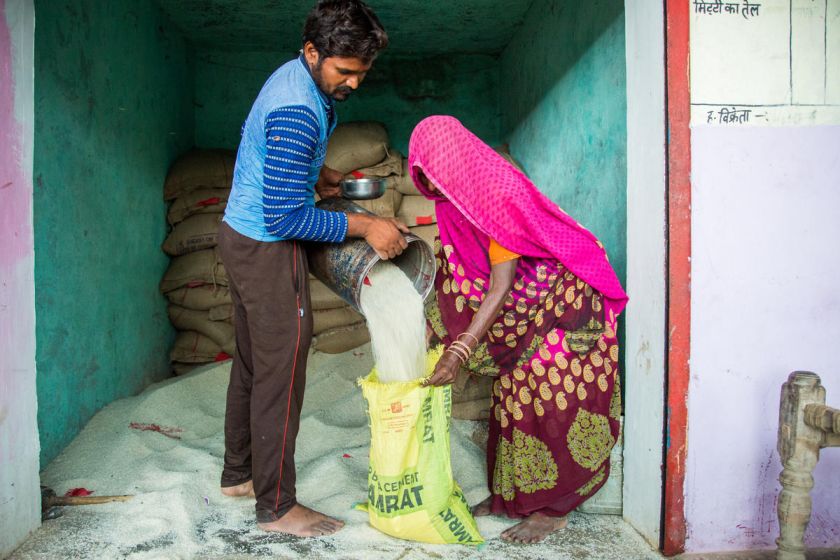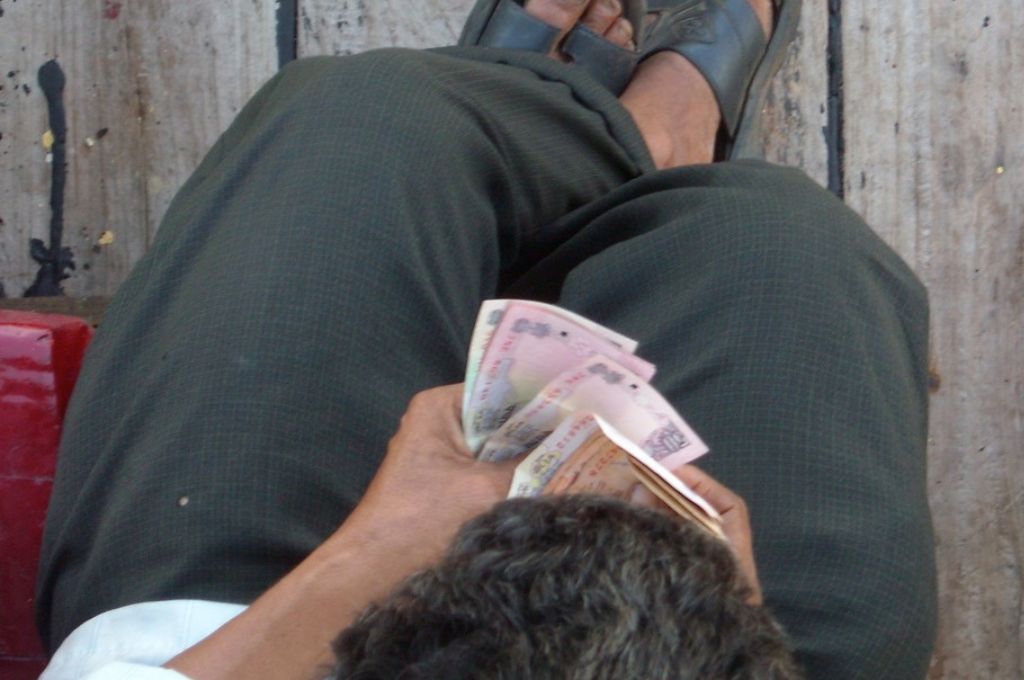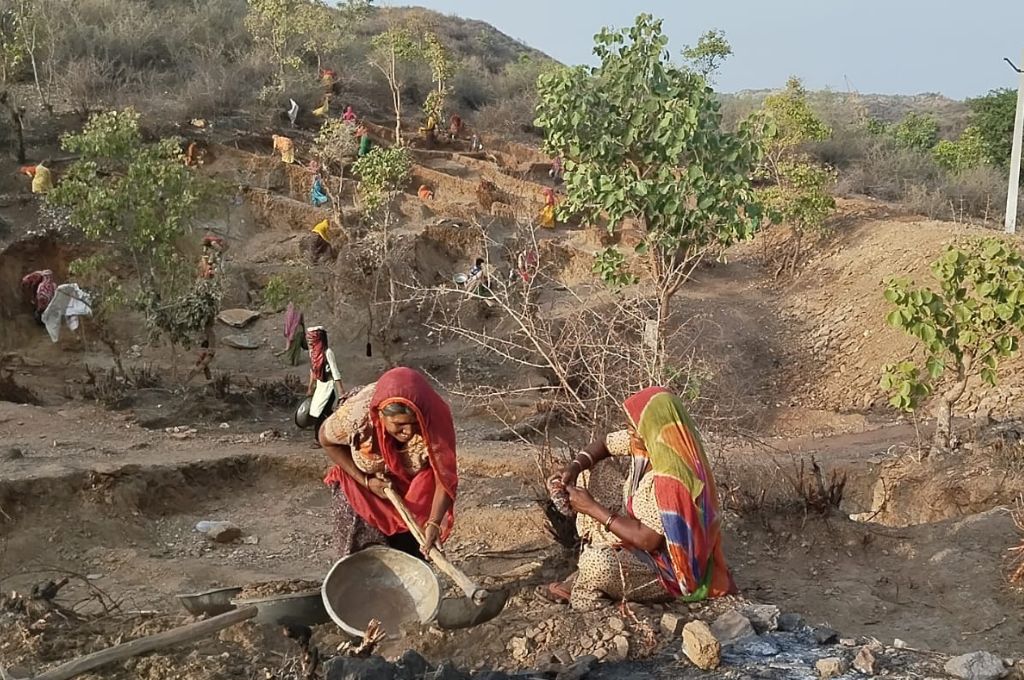Social Protection (SP) broadly refers to a set of policies and programmes aimed at protecting people against poverty, vulnerability, and social exclusion throughout their life. Over the last 15 years, India has witnessed a growth in rights-based entitlements and systemic reforms to build a more inclusive SP system. These encompass the Mid-Day Meal (MDM) programme, Public Distribution System (PDS), National Rural Employment Guarantee Scheme (NREGA), and National Social Assistance Programme (NSAP).
The wide-ranging vulnerabilities induced by the COVID-19 pandemic have highlighted the need for making social protection shock-responsive. This means adapting routine SP to address the impacts of large-scale, community-level shocks such as natural disasters, pandemics, and economic and political crises. Not only does this provide a safety net for when people need it the most, but it also provides an opportunity to integrate disaster risk management and emergency responses into SP systems. In the right context, Shock-Responsive Social Protection (SRSP) has the potential to enhance resilience, improve response times, reduce costs of delivering emergency assistance, reduce duplication, and improve national capacities to manage disasters.
There are five common SRSP strategies which policymakers can consider for adapting existing policies to respond to large-scale shocks:
- Piggybacking: Using an existing programme’s infrastructure (such as beneficiary list or staff) to deliver a new intervention.
- Vertical expansion: Temporarily increasing the value or duration of a benefit to meet the additional needs of existing recipients (ie. providing a top-up).
- Horizontal expansion: Temporarily including new beneficiaries into a social protection programme during a crisis, by extending geographical coverage, enrolling more eligible households in existing areas, or altering the enrollment criteria.
- Shadow alignment: Designing an intervention with elements resembling others that already exist or are planned, but without integrating the two. For example, this could be an alignment of objectives, targeting method, transfer value, or delivery mechanism.
- Refocusing: Adjusting the social protection system to refocus assistance on groups most vulnerable to the shock, especially in case of budget cuts.
How India adapted its social protection systems during COVID-19
When India announced its nationwide lockdown on March 24th, 2020, it left millions—particularly migrant workers and daily wagers—ill-prepared. To alleviate the consequent financial hardships, the Union Finance Minister announced a slew of measures under the Pradhan Mantri Garib Kalyan Yojana (PMGKY) on March 26th. The announcement covered several welfare measures, specifically, the provision of rations and direct cash transfers under various existing SP schemes. Six weeks into the lockdown, further welfare measures were announced, including rations for migrant workers, rollout of the ‘One Nation-One Ration Card’ (ONORC) and additional allocations under NREGA. Though delayed, innovative means such as piggybacking on, and vertical and horizontal expansion of certain existing SP programmes (like PDS), were employed to implement the response.

Piggybacking
One unique innovation we have seen during the COVID-19 crisis is using the infrastructure of existing programmes, such as the PDS. For instance, the Government of Bihar piggybacked on the PDS (one of India’s most extensive SP schemes) to provide a one-off transfer of INR 1,000 to ration-card holders during the COVID-19 crisis. Although this experience saw challenges and swift course corrections, it needs to be systematically documented, for it will play a crucial role in informing future preparedness actions. Similarly, Uttar Pradesh and Odisha piggybacked on the extensive network of fair price shops to distribute food grains (in lieu of in-school cooked meals) to beneficiaries of the MDM scheme. Delhi and Kerala, on the other hand, used the fair price shops to distribute ‘essential item kits’. Leveraging existing delivery systems helped save crucial time and reduce errors in distribution.
Vertical and horizontal expansion
PDS also demonstrated flexibility by:
- Expanding vertically ie. topping up entitlements for existing recipients: Under the PMGKAY the central government announced that it would double entitlements for more than 80 crore ration-card holders for the period of April to November 2020. Several states announced their own relief packages, which supplemented this quantity of ration and/or expanded the basket of items.
- Expanding horizontally ie. increasing coverage to new recipients: PDS eligibility norms were relaxed to include non-ration cardholders such as migrant workers and some above the poverty line families. Under the Atma Nirbhar Bharat Abhiyan, free rations were extended to migrants from May till August 2020. Though not without its challenges, the pandemic and the consequent exodus of migrants also hastened the speed of ensuring inter-state portability of ration cards through the ONORC approach.
It is clear that the PDS played a critical role in alleviating the vulnerability induced by the pandemic. However, it also exposed several inadequacies of the system, which need to be addressed in order to respond better to future crises. The most fundamental inadequacy of the current PDS regime is the large-scale exclusion of eligible beneficiaries. This exclusion is hierarchical, and takes place at multiple levels.
First, the use of outdated 2011 population census figures to determine the extent of the coverage of the scheme has excluded more than 100 million people from the system. The second layer of exclusion emanates from the mandate of linking Aadhaar with ration cards. The cancellation of non-Aadhaar-seeded ration cards as a means to eliminate fake or duplicate cards has revealed gross exclusion of genuine beneficiaries who failed to get the authentication done. Third, there is exclusion due to lack of portability of ration cards. Since the ONORC does not address the previous two layers of exclusion, it is plagued by their associated drawbacks too. Therefore, introducing the ONORC without accompanying measures to address the deeper issues of large-scale exclusion is merely touching the tip of the iceberg.
What can other welfare programmes learn in order to respond better to future shocks?
An existing welfare programme that can learn from the PDS and respond better to future shocks is NREGA—which came to the rescue of many distressed workers in the wake of the widespread job losses induced by the current pandemic. This surge in demand resulted in a significant expansion of the programme. However, an analysis of the scheme suggests that there was substantial unmet demand in districts with high levels of out-migration (hence, higher demand post reverse migration). Combined with the fact that most seasonal migrants hail from remote rural areas of some of the poorest states of the country, limited financial resources have further constrained the ability of these districts to generate sufficient work.
The government must still consider switching to cash payment during difficult times at least in remote areas.
Another important issue is that of inadequate compensation. NREGA wages are lower than the minimum wage for agriculture in many states. Times of crisis unquestionably demand a top-up over the guaranteed wage. The recent guidelines on streamlining NREGA wage payments are a welcome move. However, the government must still consider switching to cash payment during difficult times at least in remote areas. NREGA, therefore, presents a case for both horizontal and vertical expansion.
Additionally, the lack of a national urban employment guarantee (UEG) scheme left the urban poor unprotected. The long-overdue UEG is finally under consideration, and its timely implementation will bring urban informal workers within the ambit of wider crisis management. However, the success of both NREGA and UEG depends on the ability of the states to generate sufficient employment opportunities corresponding to the surging demand.
Decentralise decision making to empower states
Mobilising local authorities for identifying such opportunities is a prerequisite to yield tangible results, especially during crises. Decentralised decision-making enables policy responses to be based on the local context, which is extremely relevant for crisis management. Hence, states and their local governments need to be empowered, especially financially.
Experience from the current pandemic response highlighted how federal limitations at multiple levels proved to be a hurdle for state governments. These included the inability to access funds to structure state-level relief packages, as well as curbs imposed by the public finance management system, which prevented swift payments. Furthermore, the differential treatment of the PM-CARES and CM Relief Funds (only donations to the former counted as Corporate Social Responsibility expenditure) also curtailed the states’ financial capacity.
The budgets of social welfare programmes have borne the brunt of intended economic revival in the form of expenditure cuts or revised estimates.
Time and again, the budgets of social welfare programmes have borne the brunt of intended economic revival in the form of expenditure cuts or revised estimates. The same has happened in the allocations announced as part of the recent ‘pandemic budget’. The 2021-22 budget estimates for major social welfare schemes such as the PDS, MDM, and NREGA witnessed a steep decline compared to previous year’s revised estimates. Given that the budget is a medium for highlighting government’s policy priorities, the inadequate attention to issues such as malnutrition, food insecurity, and rural unemployment is unfortunate. As India prepares to recover from the deep economic downturn, it should not forget to look beyond economic revival.
The detrimental consequences of the delayed SP response to the current pandemic strengthens the case for building an emergency response framework across these schemes. This will fast-track assistance deployment when it is needed the most. To do this successfully, SP systems need to be resilient in the first place. The most effective strategy to do this is by ensuring minimum exclusion errors in identifying beneficiaries, thereby improving the coverage of schemes. This, in turn, would require the transition from multiple independent programme databases to an integrated social protection information system. Additionally, the need for a national social registry backed by comprehensive and dynamic socio-economic data also arises in order to cater to the needs of those outside the purview of routine SP, such as the urban poor and migrants. A holistic approach to ensure inclusive growth and social progress is the need of the hour.
—
Know more
- Explore this SRSP toolkit for low income, fragile, and conflict-affected countries.
- Learn about the 10 key aspects of SRSP.
- Read Weekly Social Protection Links, a blog by economist Ugo Gentilini that covers ideas, evidence, and practices from the world of social protection.
Do more
- Subscribe to socialprotection.org, an online, member-based knowledge sharing and capacity building platform on social protection.





